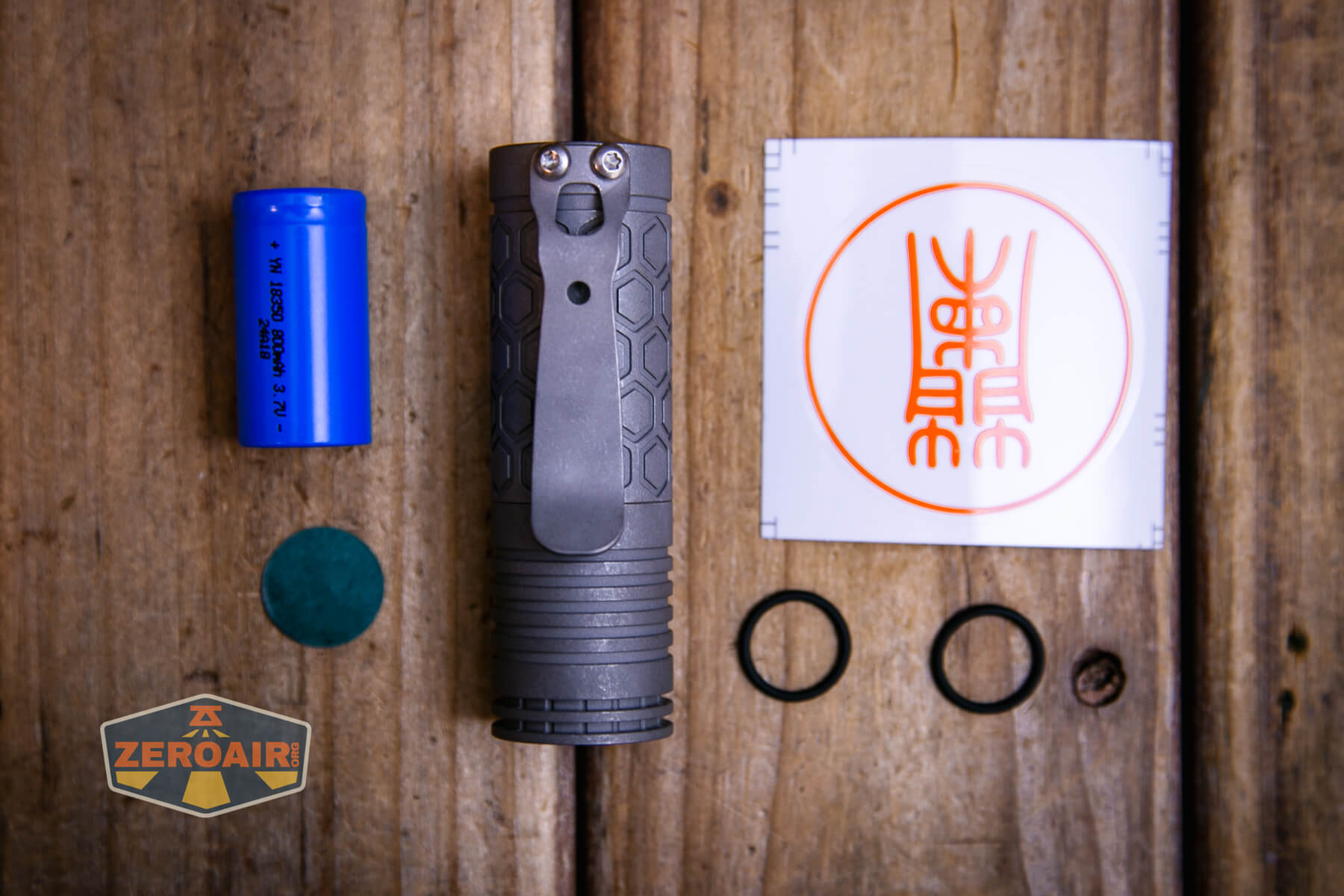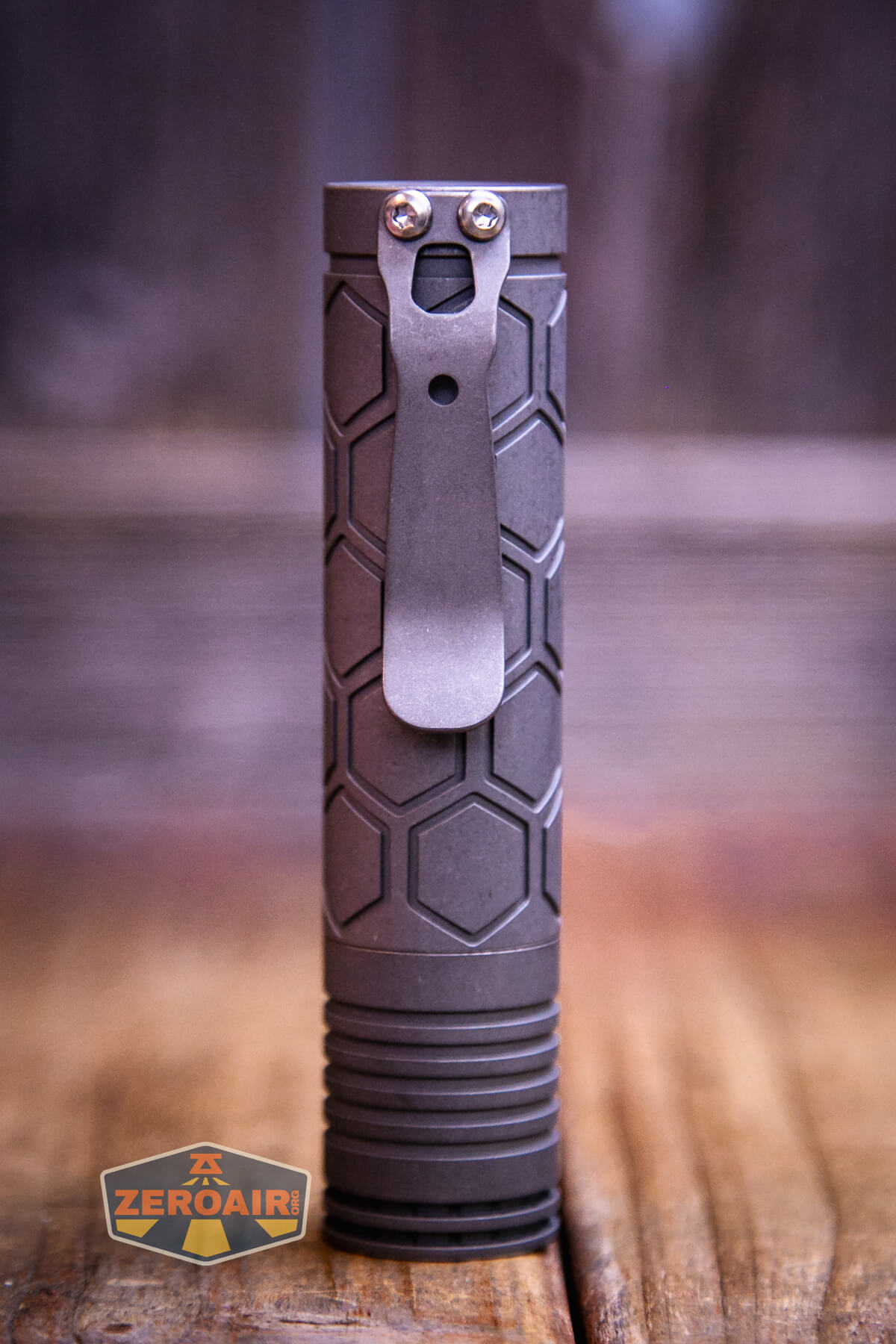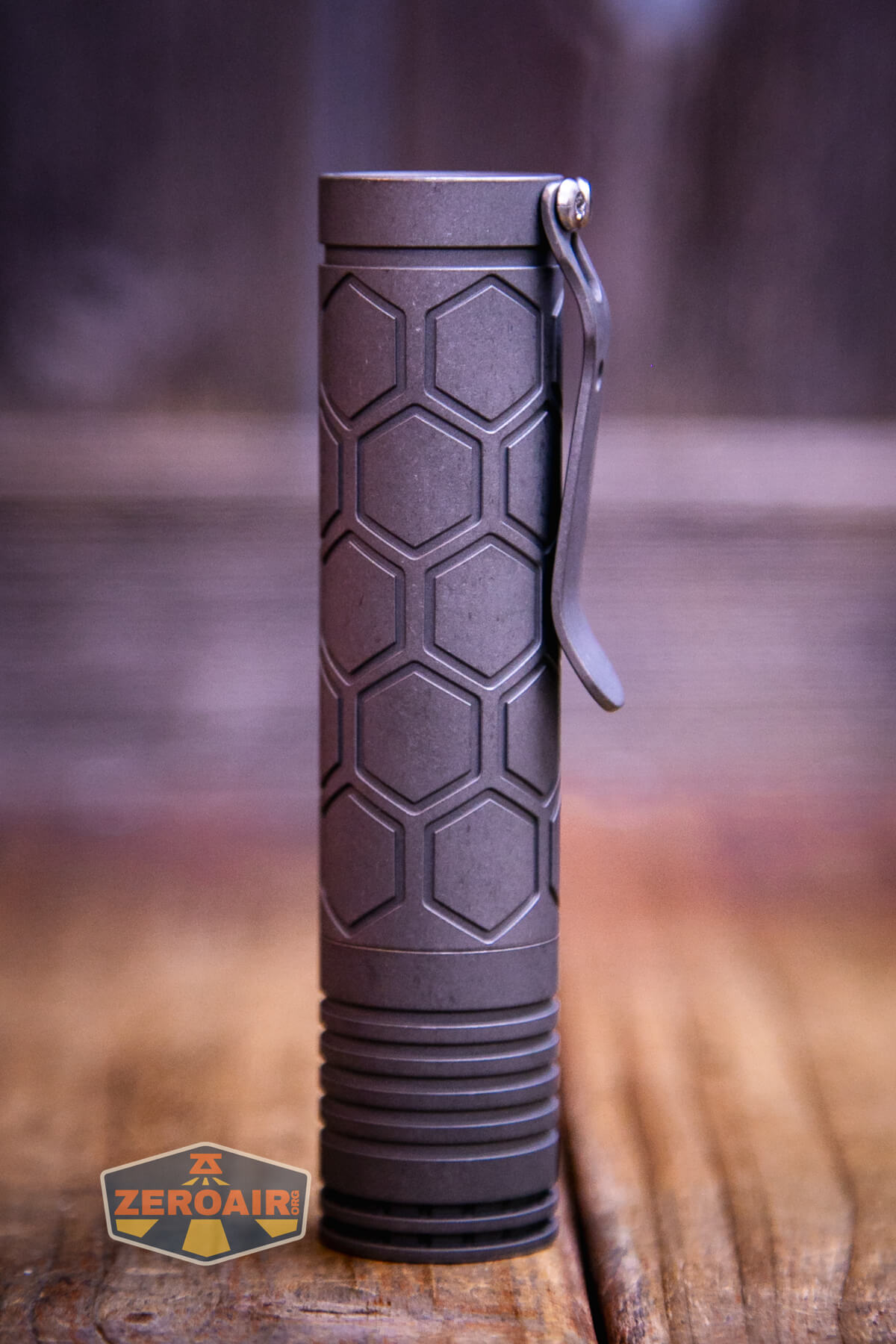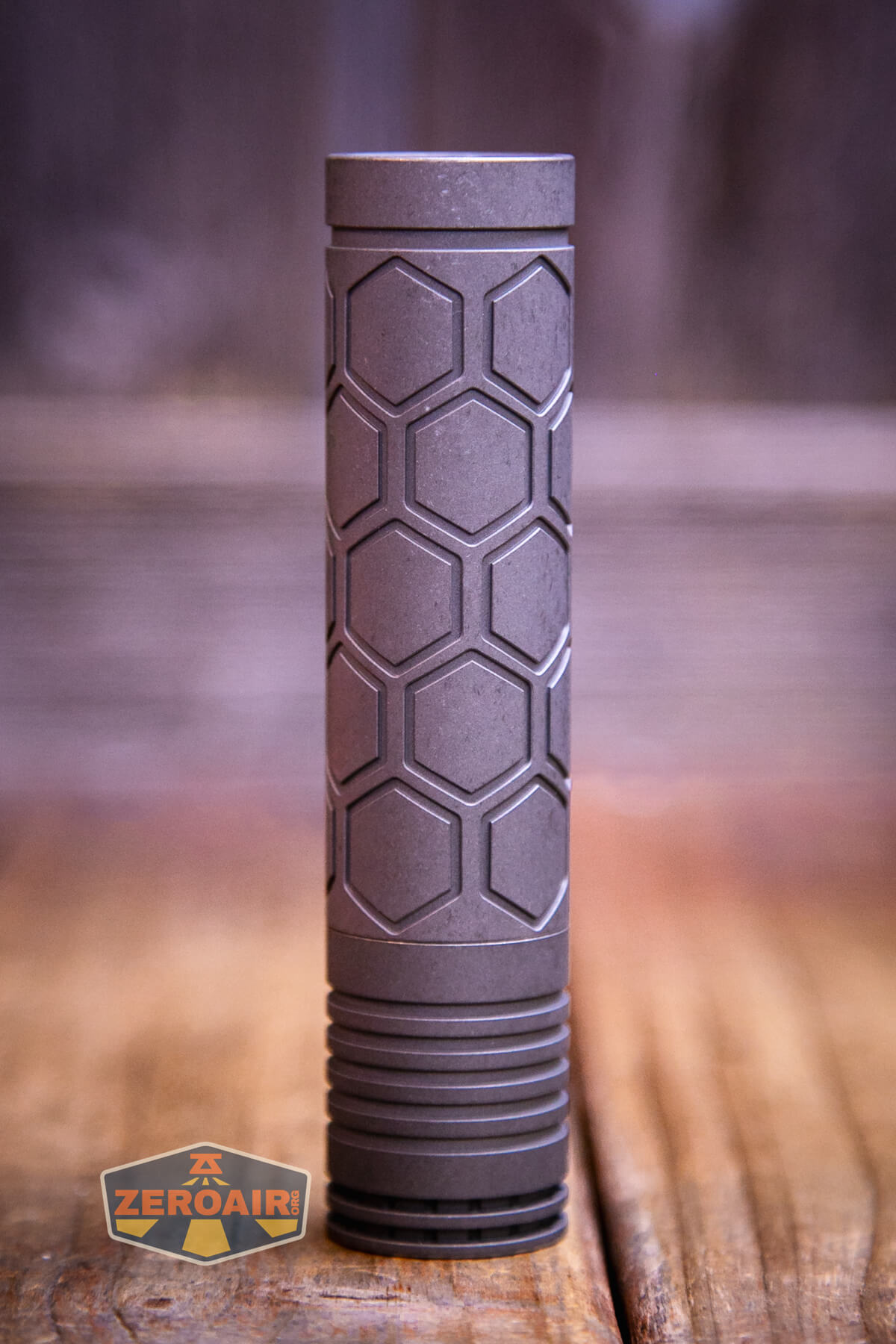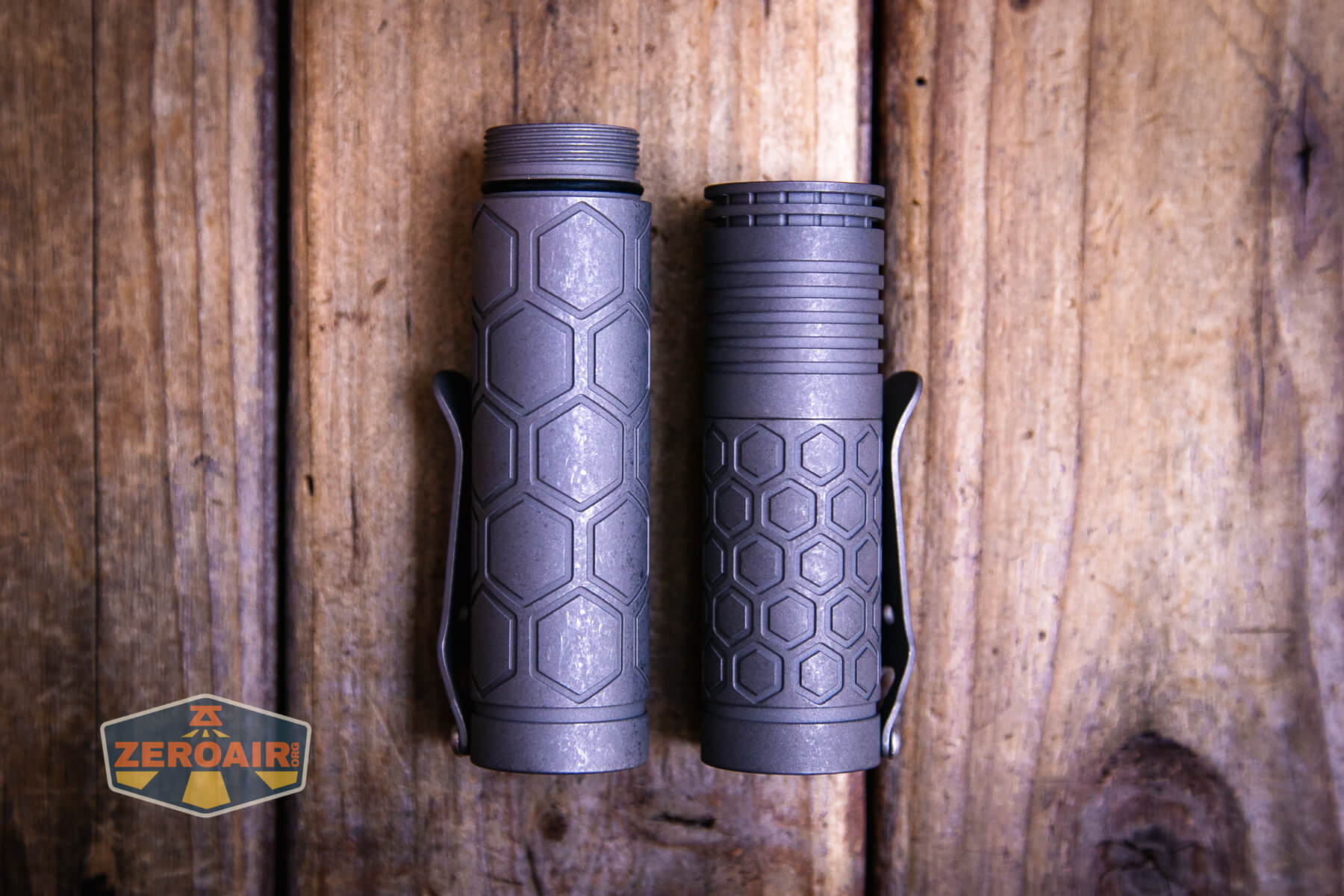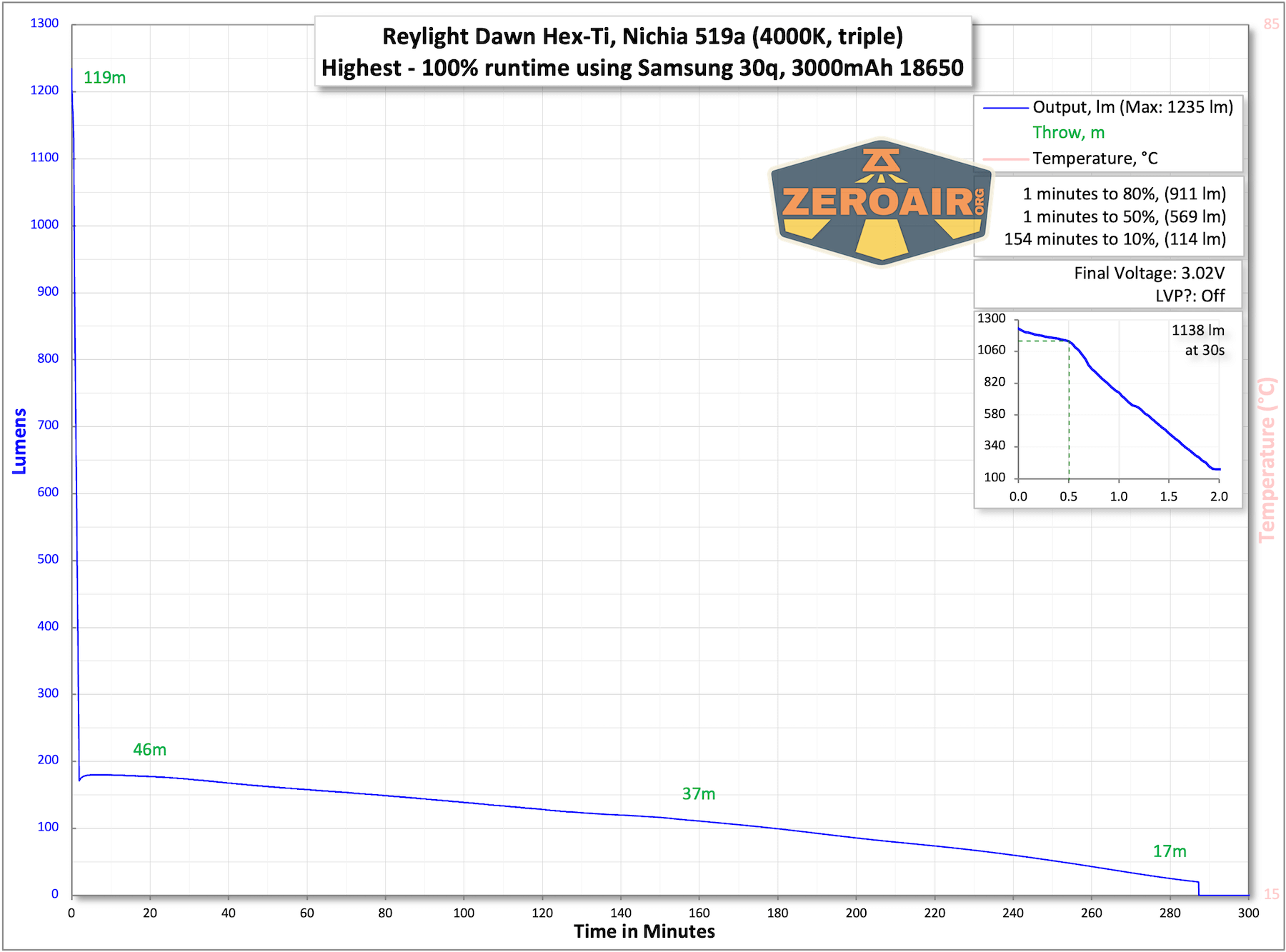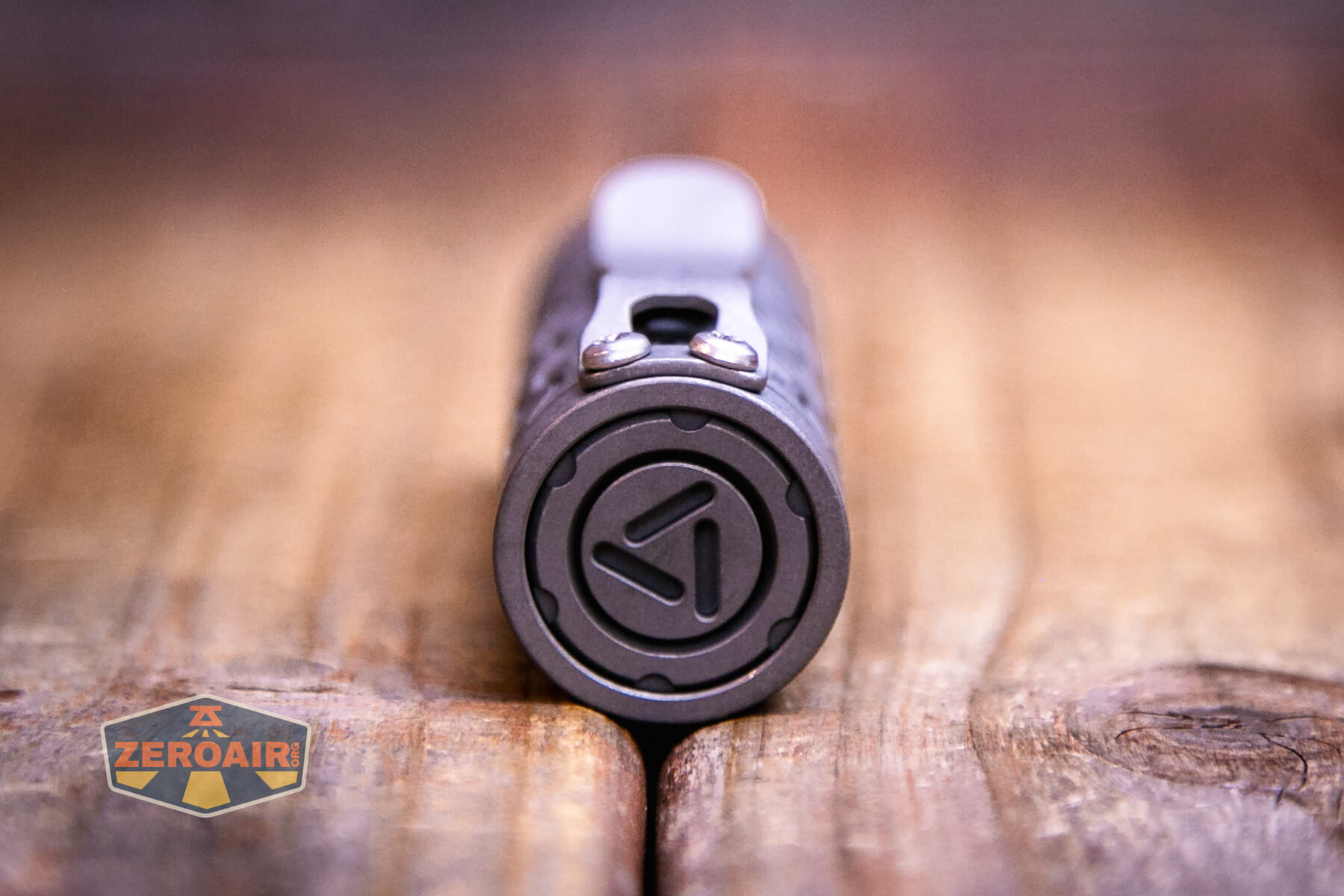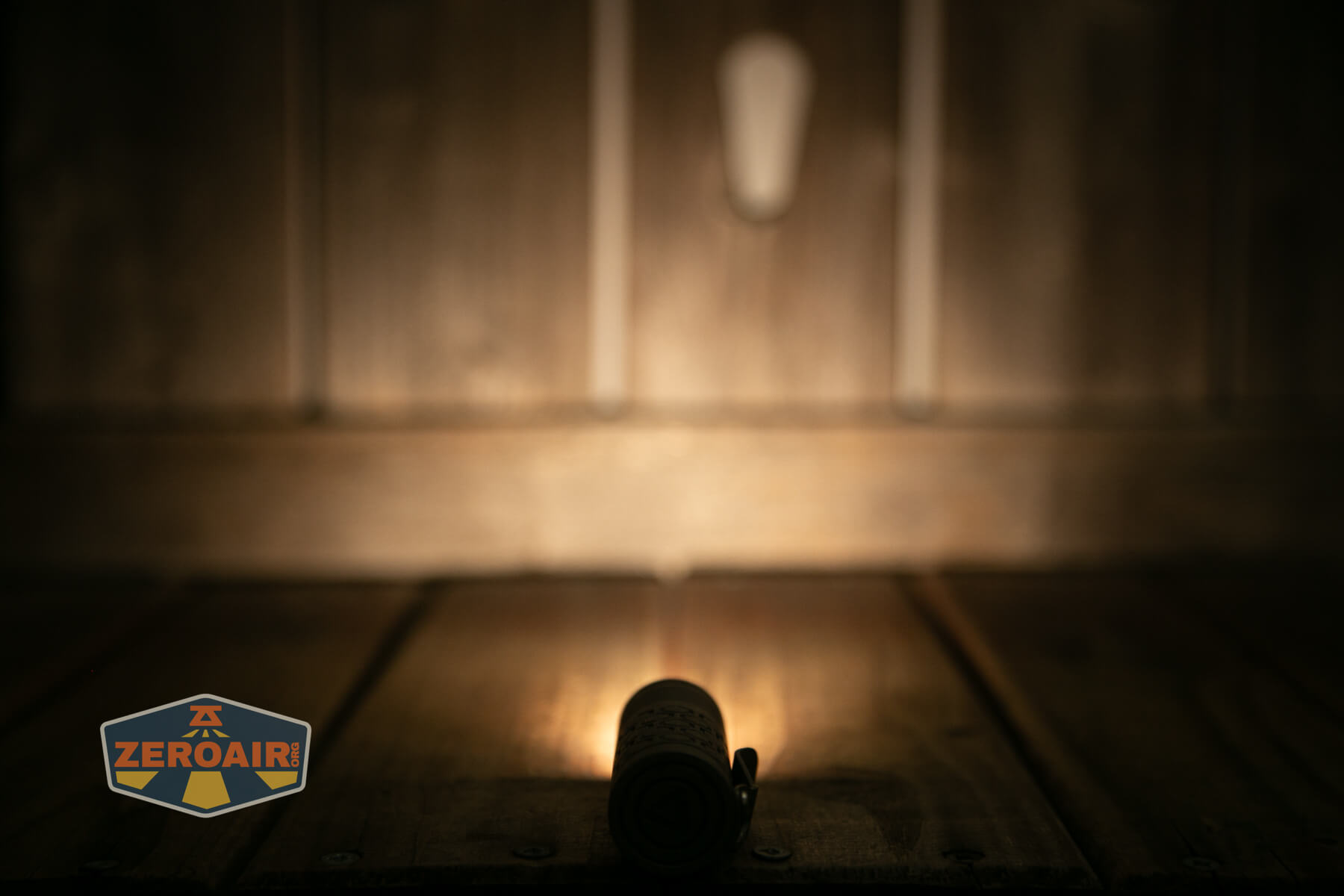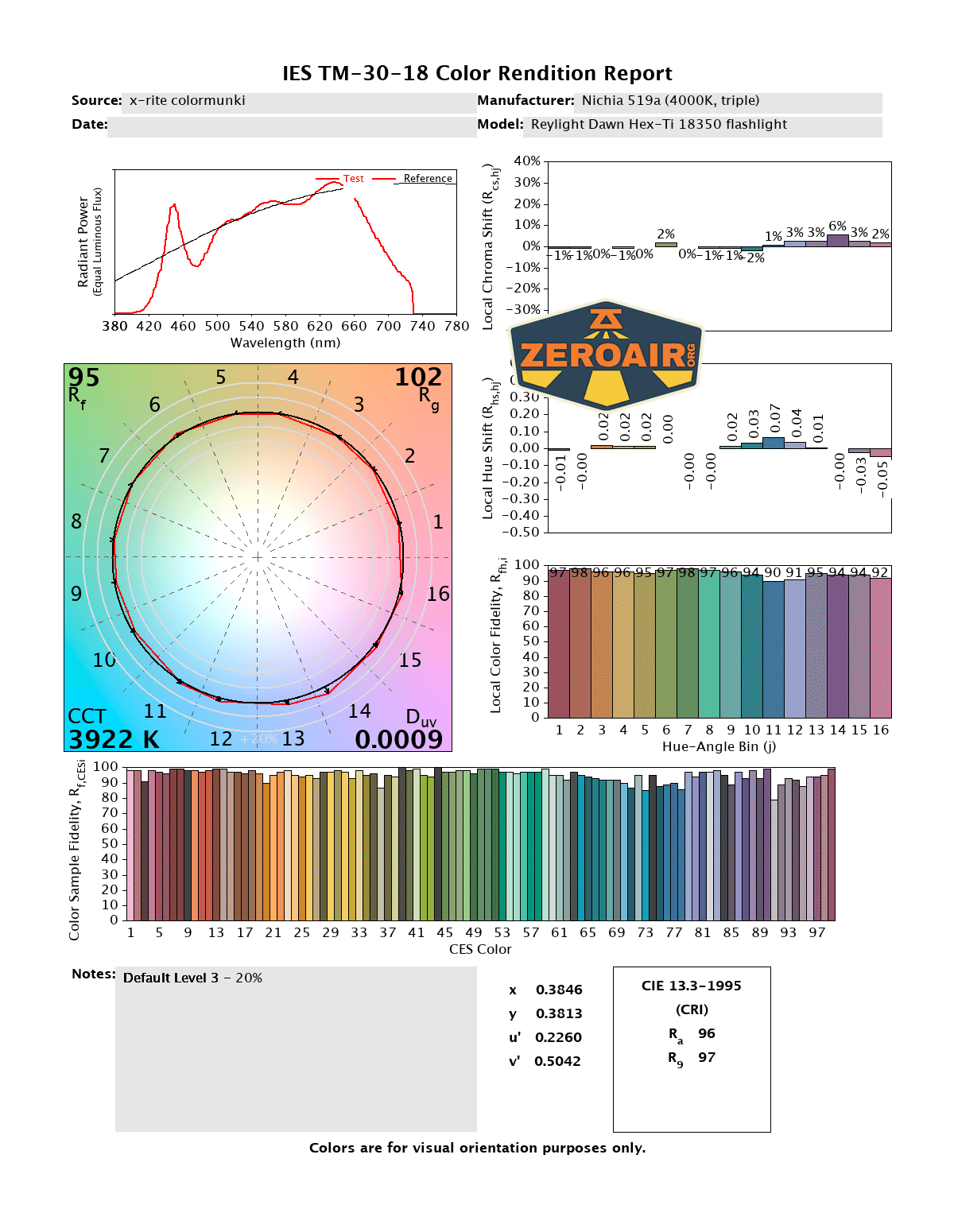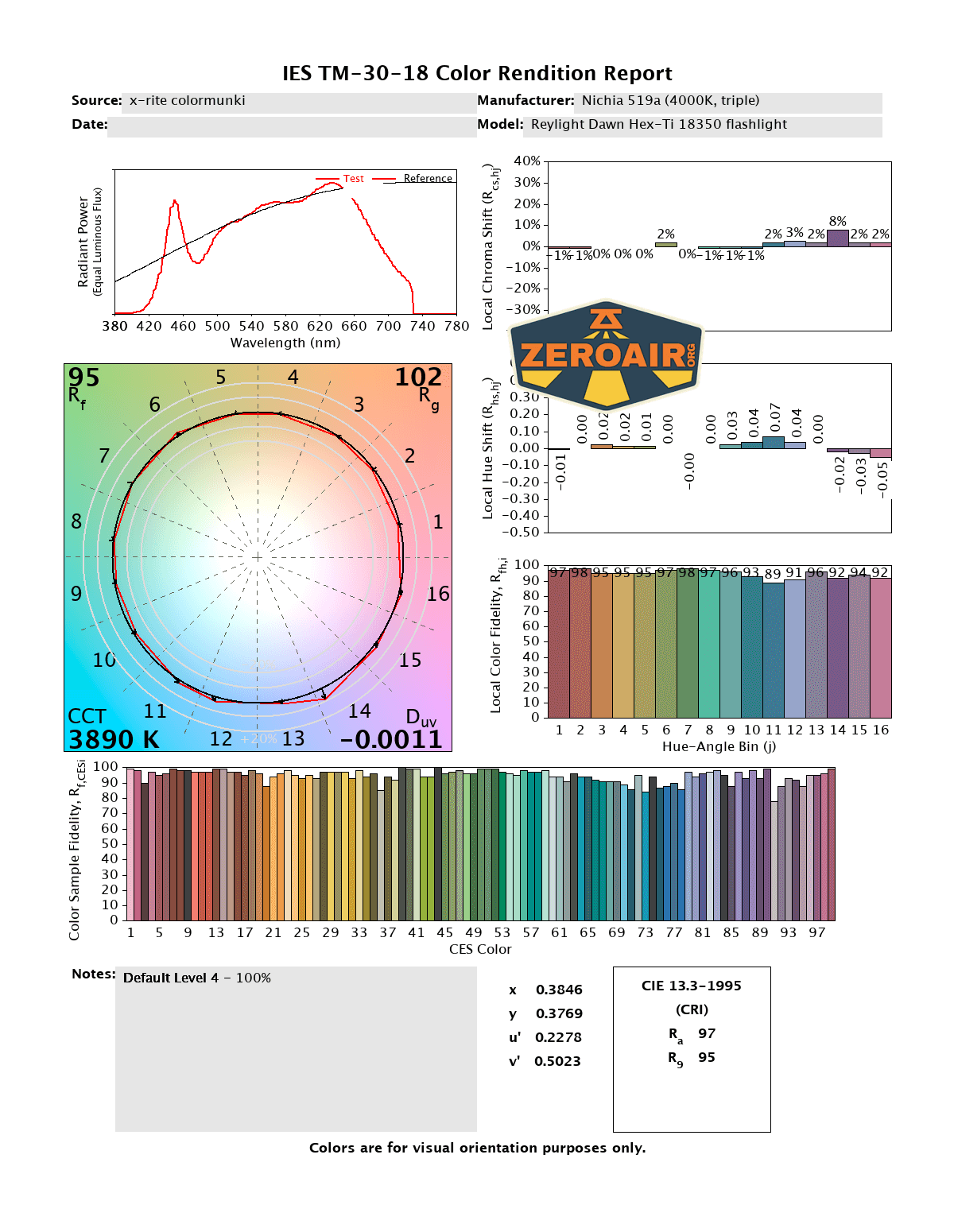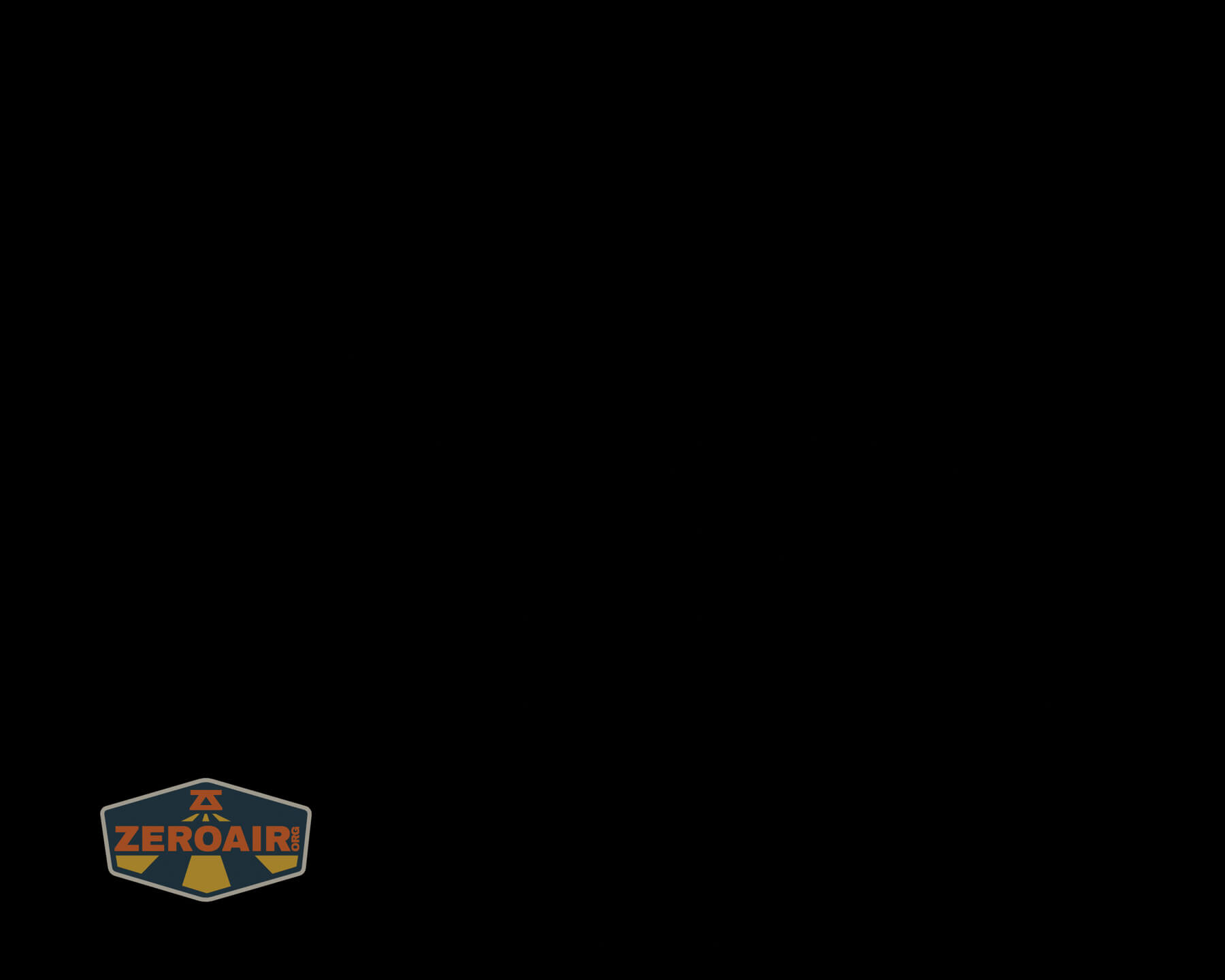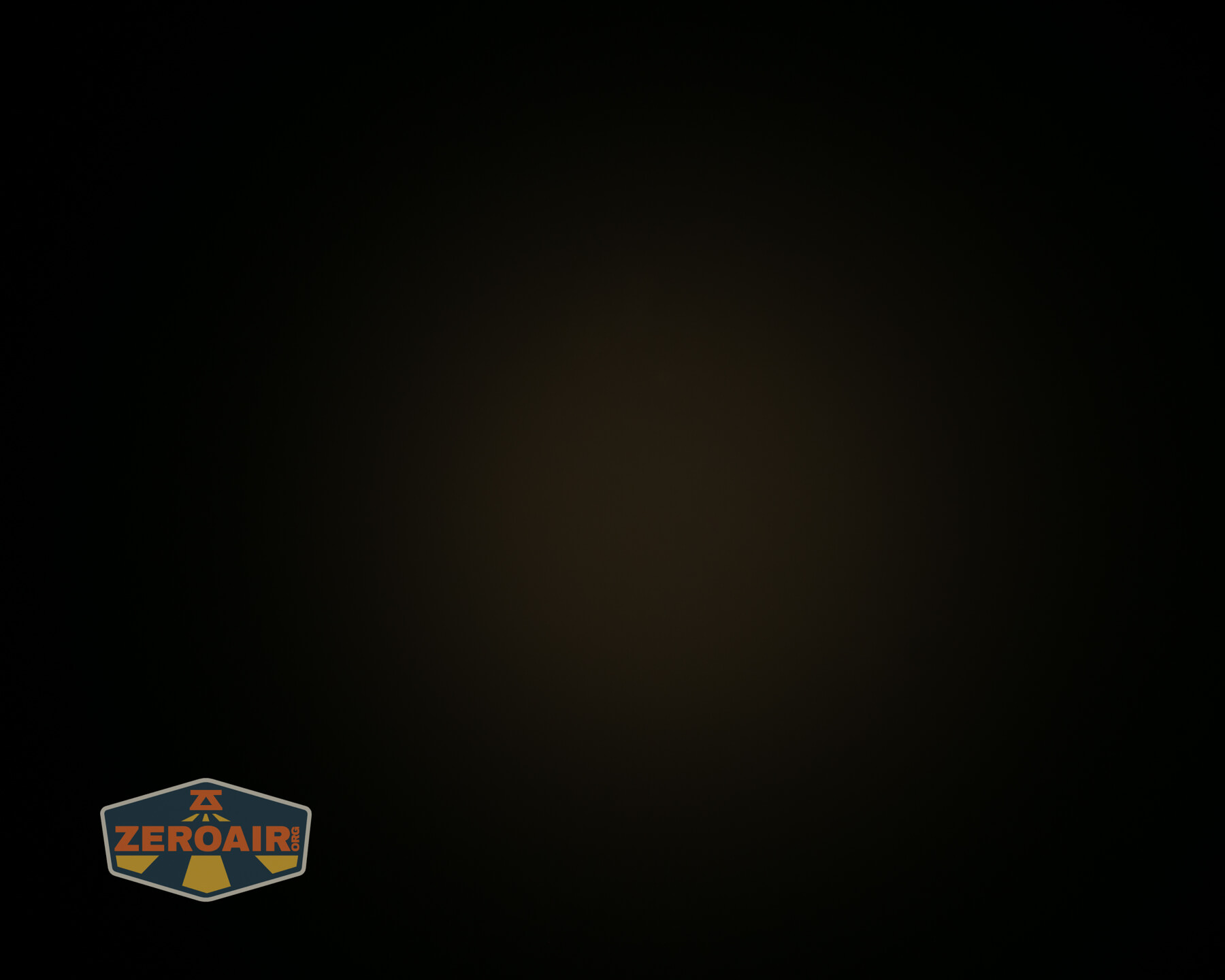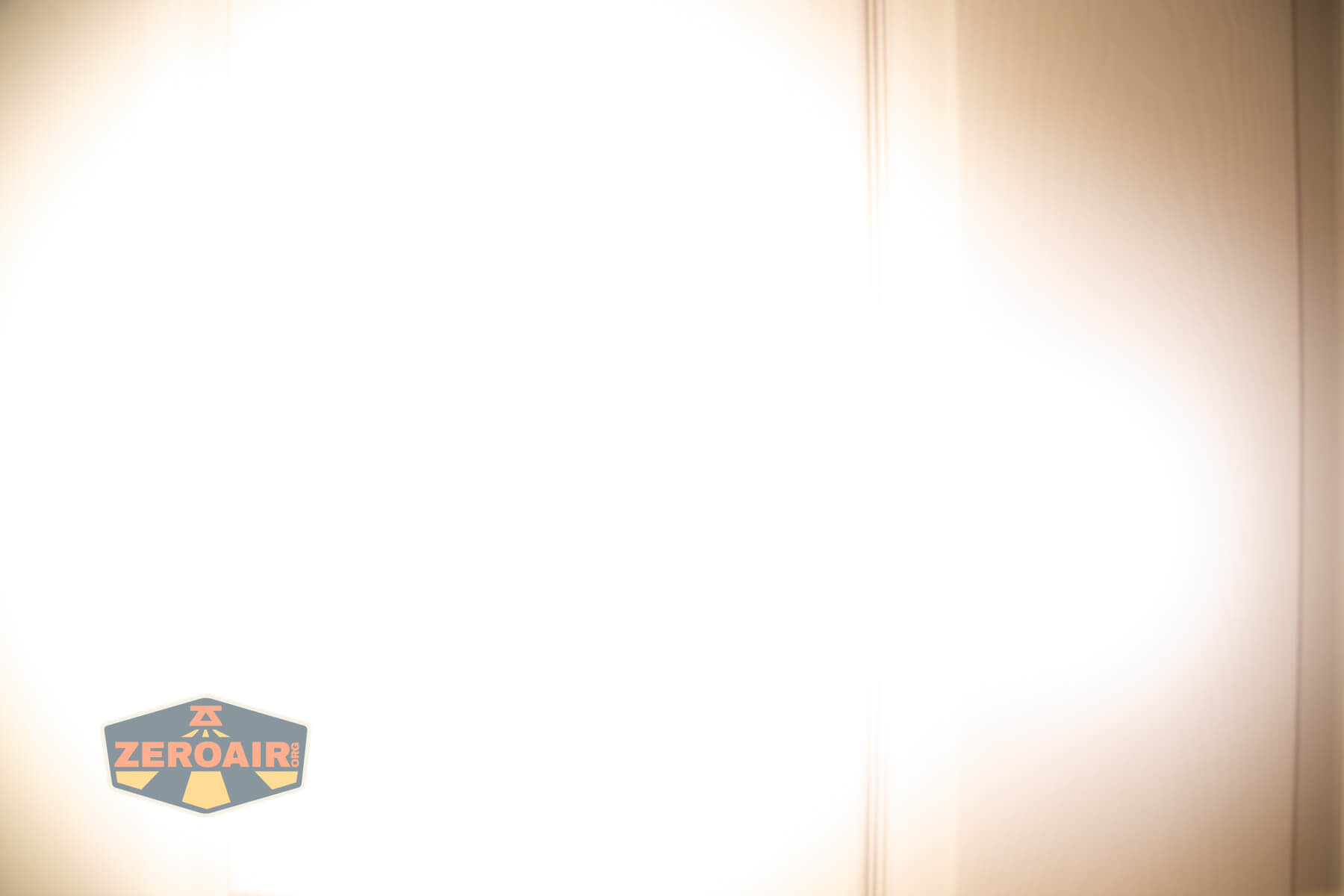Reylight Dawn Hex-Ti 18650 Flashlight Review
The Reylight Dawn Hex-Ti 18650 flashlight features Reylight’s programmable driver, a triple Nichia 519a in 4000K, and a beautiful hexagonal design. Read on!
Official Specs and Features
Here’s a link to the Reylight Dawn Hex-Ti 18650 flashlight product page.
Versions
Many versions of the ReyLight Dawn exist. This is a wholly new version. But still a Dawn. This version, like the other new versions, uses this whole separate body to accomplish 18650 compatibility. Older versions used an extension tube – more on that later! And of course, this version has the neat hexagonal design!
Price
The Reylight Dawn Hex-Ti 18650 flashlight sells for $49, but you’ll have to buy the full 18350 version too for $119. Both are available now.
What’s Included
- Reylight Dawn Hex-Ti 18650 tail body
Again, you’d need to buy the whole 18350 flashlight as a separate item in order to get the head part.
That package includes all these parts:
Package and Manual
No manual is included.
Build Quality and Disassembly
I have always appreciated the Dawn. In fact, I chased a titanium Dawn for ages, and I’m pleased that this new version is available. As with other Reylights, the build quality here is great!
The head of this Reylight Dawn Hex-Ti 18650 flashlight is slightly different from the aluminum version. They both offer tritium slots, but this Dawn Hex-Ti exposes the tritium a bit differently – and probably offers more exposure, which is an upgrade.
The pill, which is easily removable, is copper.
Both head and tail have a nice spring – the head has what I’d call a “q-lite” spring, but that’s not a bad thing for this application.
Size and Comps
If the flashlight can headstand, I’ll show it here. If it can tailstand, I’ll also show that here!
Here’s the test light with the venerable Convoy S2+. The version below is a custom laser-engraved Convoy S2+ host by GadgetConnections.com. I did a full post on an engraved orange host right here! Or go straight to GadgetConnections.com to buy your Convoy S2+ now!
Also in the photo above, my Standard Reference Material (SRM) flashlight is the Hanko Machine Works Trident, an 18350 light. While I have not reviewed or tested the Gunner Grip version seen here, I have tested a Hanko Machine Works Trident Total Tesseract in brass. I love the Trident, and it’s a striking contrast to the inexpensive Convoy S2+, another great SRM.
The 18650 body is different from the 18350 body, too. The hex pattern is bigger.
Retention and Carry
A pocket clip is included and attached to the Reylight Dawn Hex-Ti 18650 flashlight. Both bodies have their own clip!
That’s the standard ReyLight pocket clip and it’s made from titanium. I really like it. It has a nice, big mouth, nicely smoothed edges, and just overall great utility. It’s held in place by two Torx screws, and I believe it has “standard” hole spacing. I lovingly call this the platypus pocket clip.
Power and Runtime
Power to the Reylight Dawn Hex-Ti 18650 flashlight is from an 18650 cell. I tested the light with this Samsung 30Q.
The cell goes into the Dawn in the usual direction – the positive end goes toward the head.
Below are a number of runtime graphs. Performance on this version is essentially unchanged from the aluminum Dawns. Output will depend on which cell you are using.
But the duration will depend on the cell capacity. The 800mAh cell Rey offers with the 18350 body is high drain, so should have good output.
The temperature lines in these charts are included as general context, not precise measurements. The values represent the range (min to max) during testing, but should not be taken as exact readings. Temperature sensors are attached however feasible and not always on the bezel or hottest spot (assuming that can even be clearly defined). Even with ideal placement, too many variables affect temperature to definitively state a specific max value.
The light does seem to have low voltage protection, which kicks in around 3V.
Modes and Currents
For this table, I tested only the default mode groups and have added some measurements for the other modes, too.
| Mode | Mode Claimed Output (lm) | Claimed Runtime | Measured Lumens | Tailcap Amps |
|---|---|---|---|---|
| 100% | – | – | 1235 (0s) 1160 (30s) |
4.62 |
| 50% | – | – | 840 | 2.46 |
| 40% | – | – | 656 | 1.68 |
| 20% | – | – | 325 | 0.67 |
| 2% | – | – | 42 | 0.15 |
| Moonlight | – | – | 0.47 | [low] |
Pulse Width Modulation
PWM is present in the higher three default modes. It’s fast, though, and you’re very unlikely to be able to see it (without a scope).

Click here to see a “baseline” – a chart with almost no light hitting the sensor.
Then there’s the Ultrafire WF-602C flashlight, which has some of the worst PWM I’ve seen. It’s so bad that I used a post about it to explain PWM! Here are multiple timescales (10ms, 5ms, 2ms, 1ms, 0.5ms, 0.2ms) to make comparing this “worst” PWM light to the test light easier. That post also explains why I didn’t test the WF-602C at the usual 50us scale.
User Interface and Operation
On the Reylight Dawn Hex-Ti 18650 flashlight is a reverse mechanical clicky switch. The switch has a metal cover and three tritium slots.
The switch is very much like many other ReyLight flashlights and the Vosteed Rook.
Here’s a user interface table! The user interface is actually the same as that used on some ReyLights, including the LANapple.
| State | Action | Result |
|---|---|---|
| Off | Click | Moonlight^ |
| On | Click | Off |
| On | Half Press | Cycle modes (Moonlight, 2%, 20% ,100%)^^ |
| On | Tap 8x | Enters programming mode^^^ |
| On | Hold briefly | Return to Moonlight |
| On | Double tap | Turbo |
^ If the light is turned back on soon after turning off (within a couple of seconds), the previous mode will be remembered. If more than 2 seconds, the light will turn on into Moonlight.
^^ The light is user programmable, so only the default output levels are listed here.
^^^ In programming mode, the emitter will blink, then strobe. There are five selections a user can make in programming mode. The selections follow a “blink then strobe.”
The first group blinks once, then strobes. This is the mode group selection.
The second group blinks twice, then strobes. This is the memory toggle.
The third group blinks three times, then strobes. This is the moonlight toggle.
The fourth group blinks four times, then strobes. This is the mode order toggle (lowest to highest or highest to lowest).
The fifth group blinks five times, then strobes. This is the factory reset option.
To interact with any of the programming options, you must tap during the strobe section following that option. So to toggle the memory, first enter programming, then wait until the strobes after the second blink. Tap the switch. I did say “tap,” but a full click probably works just fine, too.
LED and Beam
What I have is the Nichia 519a version, and that’s what you should buy, too. In fact, that’s the only emitter listed on the Reylight Dawn Hex-Ti 18650 flashlight page.
Another change on the Dawn Hex-Ti is that the bezel reveals more of the emitter/optic than the aluminum version does. I like that. This addresses one of my few minor gripes about the aluminum version!
Below you can see the light on in the 18350 configuration.
There’s a great glow gasket included by default. It glows very brightly!
LED Color Report (CRI and CCT)
As with most (all?) of the other Nichia 519a emitters I’ve tested, both CRI and CCT are great. CCT comes in below the claim, between 3500K and 3800K. For me, that’s great. If you wanted something more neutral, though, this might be too warm for you. CRI is great, and nearly “perfect.”
CCT (Correlated Color Temperature) refers to the measurement of the color appearance of light, expressed in Kelvins (K), which indicates whether the light is warm (yellowish) or cool (bluish). A lower CCT (below 3000K) is considered warm light, while a higher CCT (above 5000K) gives cooler, bluish light.
CRI (Color Rendering Index) is a measure of how accurately a light source renders colors in comparison to natural sunlight. Scored on a scale from 0 to 100, higher CRI values indicate that colors appear more true to life and vibrant, similar to how they would look under the sun.
Beamshots
These beamshots always have the following settings: f8, ISO100, 0.3s shutter, and manual 5000K exposure. These photos are taken at floor level, and the beam hits the ceiling around 9 feet away.
Tint vs BLF-348 (KillzoneFlashlights.com 219b version) (affiliate link)
I keep the test flashlight on the left and the BLF-348 reference flashlight on the right. These photos are taken around 18 inches from the door.
I compare everything to the KillzoneFlashlights.com 219b BLF-348 because it’s inexpensive and has the best tint!
Summary and Conclusion
I love this titanium version of the Dawn. The Reylight Dawn Hex-Ti 18650 flashlight is a huge winner for me. I love that there’s an 18350 body for it (still wish it were sold as a kit). The programming options on the driver are nice, but I might prefer to have 5 modes instead of just 4 (again, that’s ok). The price is creeping up – $168 for the whole set to get a complete 18650 light. But I do still like the combo! The only real difference between the 18350 version and the 18650 version is the runtime duration. If long runtimes are important to you, go with this 18650 version. If you’ll charge your cell frequently, then the 18350 is more compelling (and your costs will be less).
The Big Table
| Reylight Dawn Hex-Ti 18650 Flashlight (Stonewashed) | |
|---|---|
| Emitter: | Nichia 519a (4500K Triple) |
| Price in USD at publication time: | $119.00 |
| Cell: | 1×18650 |
| Runtime Graphs | |
| LVP? | Yes |
| Switch Type: | Mechanical |
| On-Board Charging? | No |
| Claimed Lumens (lm) | – |
| Measured Lumens (at 30s) | 1160 |
| Candela per Lumen | 3 |
| Claimed Throw (m) | – |
| Candela (Calculated) in cd (at 30s) | 182lux @ 4.61m = 3868cd |
| Throw (Calculated) (m) | 124.4 |
| Claimed CCT | 4000 |
| Measured CCT Range (K) | 3700-3900 Kelvin |
| Item provided for review by: | Reylight |
| All my Reylight reviews! | |
^ Measurement disclaimer: Testing flashlights is my hobby. I use hobbyist-level equipment for testing, including some I made myself. Try not to get buried in the details of manufacturer specifications versus measurements recorded here; A certain amount of difference (say, 10 or 15%) is perfectly reasonable.
What I like
- Uses Nichia 519a
- Nearly perfect CRI
- Warm white (at around 3800K)
- Good user interface (programmable)
- New Hex design is great
- The “hold for moonlight” option
What I don’t like
- Output is dependent upon the cell being used
- Not available as a “kit” with one head and both sizes of bodies (in fact, you must buy the 18350 to get the head for use on 18650).
Notes
- This content originally appeared at zeroair.org. Please visit there for the best experience!
- Please use my Amazon.com referral link to help support zeroair.org!
- Please support me on Patreon! I deeply appreciate your support!



